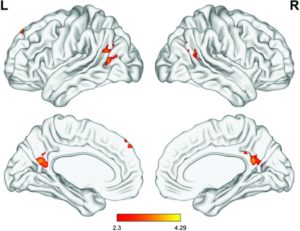Reduce Teacher Stress and Burnout with Mindfulness
By John M. de Castro, Ph.D.
“mindfulness programs in the workplace may help employees better deal with stress, and develop the ability to observe negative emotions and automatic thought patterns and behaviors, and remain calm, present, self-aware and alert, rather than succumbing to the slippery slope of negative emotions.” – B. Grace Bullock
Stress is epidemic in the western workplace with almost two thirds of workers reporting high levels of stress at work. This often produces burnout; fatigue, cynicism, emotional exhaustion, and professional inefficacy. Teachers experience burnout at high rates. Roughly a half a million teachers out of a workforce of three million, leave the profession each year and the rate is almost double in poor schools compared to affluent schools. Indeed, nearly half of new teachers leave in their first five years.
Burnout frequently results from emotional exhaustion. This exhaustion not only affects the teachers personally, but also the students, as it produces a loss of enthusiasm, empathy, and compassion. Regardless of the reasons for burnout or its immediate presenting consequences, it is a threat to schools and their students. In fact, it is a threat to the entire educational systems as it contributes to the shortage of teachers. Hence, preventing burnout has to be a priority.
Mindfulness has been demonstrated to be helpful in treating and preventing burnout.
In today’s Research News article “Can mindfulness mitigate the energy-depleting process and increase job resources to prevent burnout? A study on the mindfulness trait in the school context.” (See summary below or view the full text of the study at: https://www.ncbi.nlm.nih.gov/pmc/articles/PMC6448859/), Guidetti and colleagues examine the relationship of mindfulness to teacher burnout. They recruited primary, middle, and secondary school teachers and had them complete questionnaires measuring teacher mindfulness, teacher stress, meaningfulness of work, and burnout, including emotional exhaustion, and depersonalization.
They found significant relationships between mindfulness and the psychological state of the teachers with the higher the teacher’s levels of mindfulness the lower the levels of stress, emotional exhaustion, and depersonalization and the higher the levels of meaningfulness of work. A confirmatory factor analysis revealed that mindfulness was related to burnout (both emotional exhaustion and depersonalization) both directly and indirectly. High levels of mindfulness not only were directly related to burnout but also indirectly by being related to lower levels of stress and higher levels of meaningfulness of work which in turn were related to lower levels of burnout.
These results are correlational, so caution must be exercised in inferring causation. Previous research, however, has clearly demonstrated that mindfulness training results in decreased burnout in multiple occupations. So, it is likely that mindfulness is the cause of the lower levels of burnout observed in the current study with teachers. The current results show how mindfulness is related to lower teacher burnout. It does so both directly and indirectly through its relationships with stress and meaningfulness of work.
So, reduce teacher stress and burnout with mindfulness.
“when teachers practice mindfulness, students’ misbehavior and other stressors become like water off a duck’s back, allowing them to stay focused on what teachers really want to do: teach.” – Vicki Zakrzewski
CMCS – Center for Mindfulness and Contemplative Studies
This and other Contemplative Studies posts are also available on Google+ https://plus.google.com/106784388191201299496/posts and on Twitter @MindfulResearch
Study Summary
Guidetti, G., Viotti, S., Badagliacca, R., Colombo, L., & Converso, D. (2019). Can mindfulness mitigate the energy-depleting process and increase job resources to prevent burnout? A study on the mindfulness trait in the school context. PloS one, 14(4), e0214935. doi:10.1371/journal.pone.0214935
Abstract
Background
Past studies in the teaching context provided evidence of the role of mindfulness-based intervention in improving occupational wellbeing. This study aims to increase the extant knowledge by testing the mechanism that links teachers’ mindfulness at work to occupational wellbeing. Rooted in the job demand–resource model, the mindfulness trait is conceptualized as a personal resource that has the ability to impact and interact with job demands and resources, specifically workload stress appraisal and perceived meaningfulness of work, in affecting teachers’ burnout.
Methods
A sample of primary, middle, and secondary school teachers (N = 605) completed a questionnaire that aimed to assess teachers’ mindfulness trait and the measures of the quality of occupational life in the school context. Confirmatory factor analysis (CFA) was conducted to test the model fit indices; further analyses were performed to test the hypotheses about mediation and moderation effects.
Results
The CFA showed good model fit indices. Further analyses highlighted that teachers’ mindfulness is negatively associated with workload stress appraisal and that positively influenced work meaning, in turn mediating the relationship between mindfulness and burnout. Finally, mindfulness moderated the effect of workload stress appraisal on burnout.
Conclusions
Rooted in the job demand–resource model, this study emphasizes an underrepresented personal resource, that is, the mindfulness trait at work, and the links that favor its impact on burnout. Practical and future research implications are also discussed.
https://www.ncbi.nlm.nih.gov/pmc/articles/PMC6448859/









